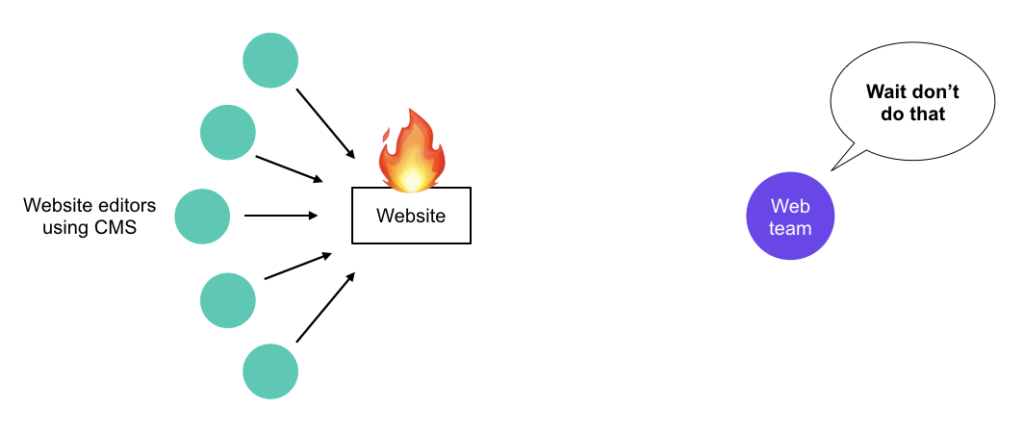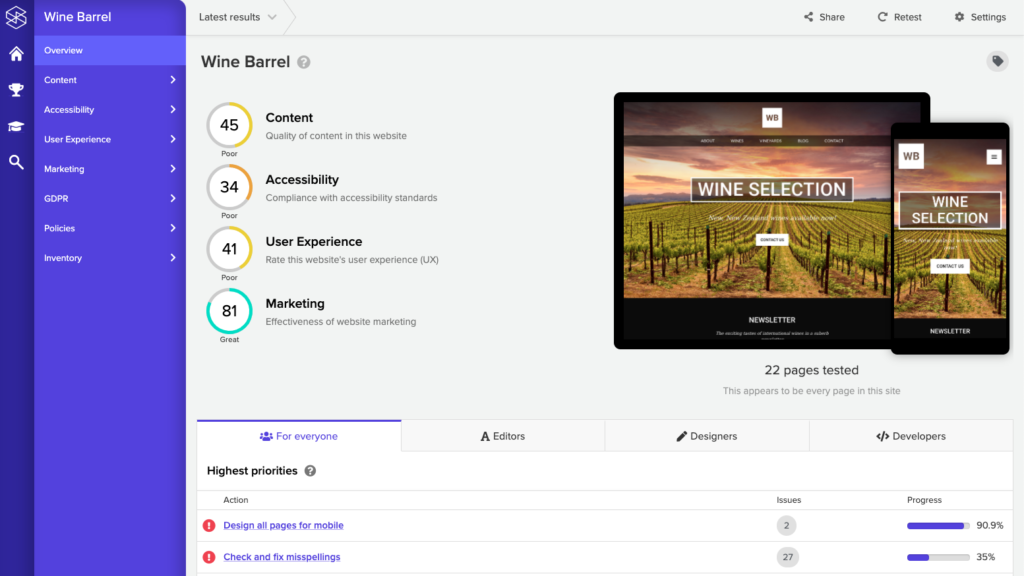What is Silktide?
Silktide is a platform for understanding and improving large websites.
Silktide monitors your websites continuously, and automatically lets your team know when there are problems or opportunities to improve.
The challenges of large websites
Traditionally large websites are managed in one of two ways, both of which have major problems.
Some websites are centralized, with contributors to the website passing their requests through a central web team:

This usually breaks down at scale, as too much demand is placed upon a single team.
The typical solution to this is a decentralized team, with contributors using a CMS to make changes to the website themselves:

The problem here is that websites almost always exhibit frequent issues with quality and consistency.
Silktide acts as a guardian of your website, detecting issues, enforcing your guidelines, and automatically providing feedback to your website contributors:

Silktide allows your organization to make rapid changes to your websites with confidence, knowing that quality is maintained and can be reviewed by anyone.
What Silktide does
The Silktide platform is designed to covers all the major concerns of a modern website – from copywriting, to marketing, accessibility, GDPR compliance and more. You can design your own guidelines to meet your own custom requirements.

The main areas of a website covered by Silktide are:
Content
- Spelling and grammar checking
- Broken links
- Content accessibility
- Content SEO
- Readability
- Inappropriate content
Accessibility
- Validate against WCAG 2.1 A, AA and AAA
- Test PDFs for accessibility
- Smart accessibility recommendations
- Help with creating accessibility statements
- Guidelines
- Mobile
- PDFs
User experience
- Mobile
- Speed
- Functionality (including broken pages, missing images, JavaScript errors)
Uptime
Marketing
- Search keyword rankings for you and your competitors
- PPC advertising
- Content optimization
- Technical optimization
- Backlinks
- Popularity
- SERP
- Amount of content
GDPR
- Geographic footprint of where your data goes
- Audit of your forms, cookies, technologies and more
- Smart GDPR recommendations
Policies
- Define custom rules to meet your own requirements
- Choose from a policy library of standard rules to get started
Inventory
- List of your pages and documents
- List of your contact details
- List of links, metadata, headings and more
- Add custom items via policies
- List of images and alternative text.
Key benefits of using Silktide
Silktide consolidates many of your website management and review processes into a single system, allowing you to:
- Identify and fix problems quickly
- Keep your team aware of how well their websites are performing
- Benchmark parts of your websites against each other, or against competitors, using Leaderboards.
- Break up complex areas like accessibility and SEO into manageable actions
- Understand what your website contains and manage it better
- Deliver a consistently better web experience